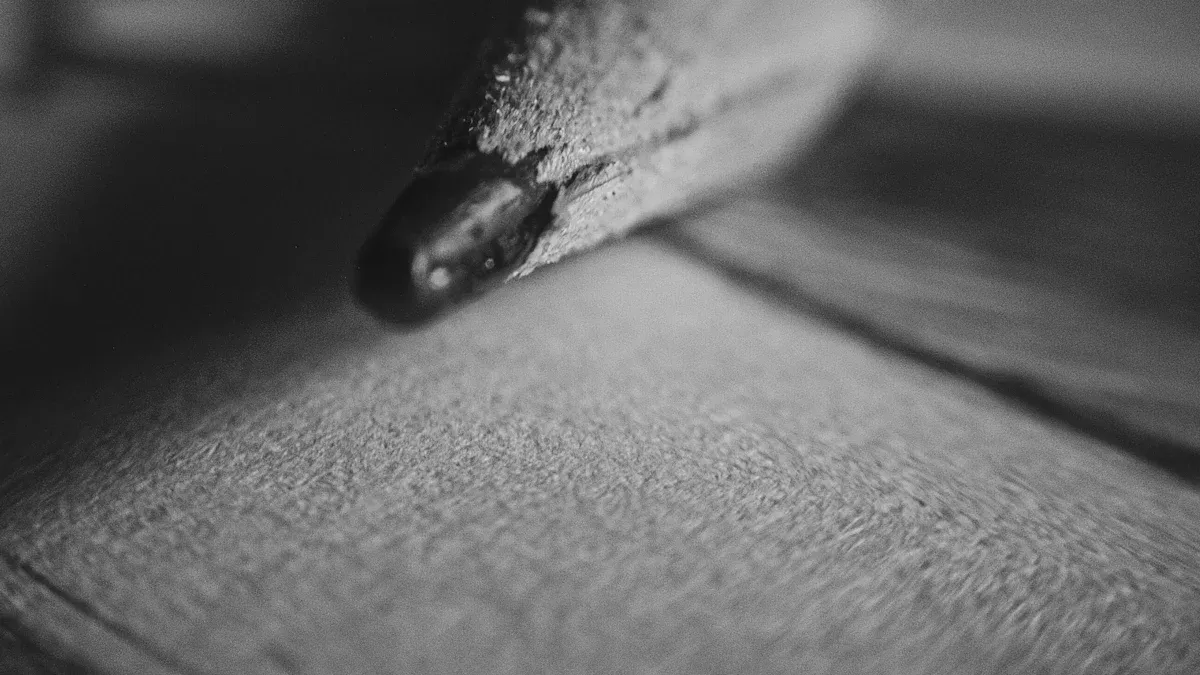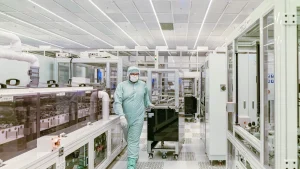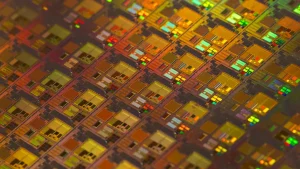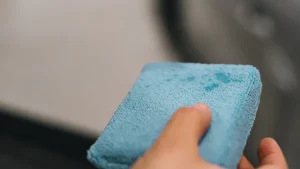
Industrial processes often require a careful balance between cost efficiency and operational performance. Deciding between replaceable graphite parts and permanent coatings involves a thorough cost-benefit analysis. Durable and long-lasting solutions like sic coating, cvd coating, or tac coating are popular options. However, in situations where flexibility or frequent replacement is a priority, graphite parts, including a 5. GRAPHITE SUSCEPTOR, can offer significant advantages.
Key Takeaways
- Permanent coatings last a long time and need less upkeep. They work well for hot and tough industrial jobs.
- Replaceable graphite parts cost less at first and are flexible. But they wear out faster, costing more in the long run.
- Think about your needs and money to pick the best option. Balance starting costs with future savings and how well it works.
Understanding Permanent Coatings and Graphite Parts
Overview of Permanent Coatings
Permanent coatings are engineered to provide long-lasting protection and performance in industrial environments. These coatings, such as silicon carbide (SiC), tantalum carbide (TaC), and chemical vapor deposition (CVD) coatings, are designed to enhance durability, thermal resistance, and efficiency. For example, silicon carbide coatings are widely used in diffusion process kits to minimize downtime and reduce costs. Similarly, TaC-coated graphite excels in high-temperature applications like vacuum furnaces due to its oxidation resistance and thermal stability. CVD coatings, on the other hand, can extend the service life of graphite fixtures by up to 300%, significantly improving reliability in demanding industrial processes.
| Coating/Component Type | Key Benefits | Application Context |
|---|---|---|
| Silicon Carbide Coating | Enhanced durability, thermal resistance, efficiency | Diffusion process kits to reduce costs and downtime |
| TaC-Coated Graphite | Combats oxidation, enhances durability, thermal stability | Vacuum furnaces for high-temperature applications |
| CVD Coated Graphite | Extends service life by 300%, improves reliability | Graphite fixtures to optimize industrial performance |
Characteristics of Replaceable Graphite Parts
Graphite parts are valued for their flexibility and cost-effectiveness in specific industrial applications. These components, such as graphite susceptors, are lightweight, thermally conductive, and resistant to high temperatures. Their replaceable nature makes them ideal for processes requiring frequent part changes or customization. However, they may wear out faster than permanent coatings, leading to higher replacement frequency. Despite this, their affordability and adaptability make them a practical choice for industries prioritizing short-term operational needs.
Common Applications in Industrial Settings
Both permanent coatings and graphite parts serve critical roles in industrial settings. Permanent coatings are commonly applied to equipment in high-temperature environments, such as vacuum furnaces, diffusion chambers, and industrial floors. Their durability and resistance to wear ensure consistent performance over time. Graphite parts, on the other hand, are often used in applications requiring thermal conductivity and lightweight materials, such as in semiconductor manufacturing or as components in high-temperature furnaces. The choice between these options depends on the specific operational requirements and long-term goals of the industry.
Cost Analysis of Permanent Coatings vs. Graphite Parts
Comparing Initial Investment Costs
The initial investment for permanent coatings tends to be higher than that of replaceable graphite parts. Coatings like silicon carbide or tantalum carbide require advanced application processes, which contribute to their upfront cost. These coatings are engineered to provide long-term durability and performance, making them a significant initial expense. In contrast, graphite parts are more affordable to produce and purchase. Their lower cost makes them an attractive option for industries with limited budgets or those requiring frequent part replacements. However, the higher upfront cost of permanent coatings often translates into long-term savings due to reduced maintenance and replacement needs.
Maintenance Costs Over Time
Permanent coatings generally require minimal maintenance once applied. Their durability and resistance to wear reduce the need for frequent repairs or upkeep. For example, protective coatings like diamond-like carbon (DLC) extend the lifespan of graphite components, minimizing the need for replacements. This reduction in maintenance frequency leads to lower operational costs over time. On the other hand, graphite parts may demand more frequent attention. Their susceptibility to wear and tear necessitates regular inspections and occasional repairs. While the maintenance of graphite parts may seem manageable initially, the cumulative costs can surpass those of maintaining permanent coatings.
Replacement Costs and Frequency of Graphite Parts
Graphite parts, while cost-effective initially, often require frequent replacement due to their limited lifespan. High-temperature environments and continuous use accelerate their wear, leading to increased replacement frequency. Each replacement incurs additional costs, including labor and downtime. In contrast, permanent coatings significantly reduce the need for replacements. Coatings like DLC enhance the durability of graphite components, extending the time between replacements. This improvement not only lowers replacement costs but also minimizes disruptions to industrial operations. Over time, the cost-effectiveness of permanent coatings becomes evident, especially in applications demanding consistent performance and minimal downtime.
Note: Industries must weigh the long-term financial implications of frequent graphite part replacements against the upfront investment in permanent coatings. While graphite parts offer flexibility, their recurring costs can impact overall profitability.
Performance and Durability Comparison

Lifespan of Permanent Coatings
Permanent coatings are designed to withstand harsh industrial conditions, offering a significantly longer lifespan compared to replaceable components. For instance, epoxy coatings in residential settings can last between 10 to 20 years. In industrial environments, where wear and tear are more intense, epoxy coatings typically endure for 5 to 7 years, with some cases extending beyond this range. This durability makes permanent coatings a cost-effective solution for industries seeking to minimize frequent replacements and operational disruptions.
The extended lifespan of coatings like titanium dioxide (TiO2) or silicon carbide further enhances their appeal. These coatings maintain their structural integrity under extreme temperatures and abrasive conditions, ensuring consistent performance over time. By reducing the need for frequent reapplications, permanent coatings contribute to long-term operational efficiency and financial savings.
Durability and Wear of Graphite Parts
Graphite parts, while versatile and cost-effective, exhibit a shorter lifespan compared to permanent coatings. Their lightweight and thermally conductive properties make them ideal for applications requiring flexibility. However, their susceptibility to wear and tear under high-temperature and high-pressure conditions limits their durability. Frequent exposure to such environments accelerates material degradation, necessitating regular replacements.
A comparative study highlights the performance gap between permanent coatings and graphite parts. For example, titanium dioxide coatings demonstrate a material removal rate 3.5 times higher than graphite parts. Additionally, the tool wear ratio (TWR) of TiO2 coatings is 1.8 times lower, indicating superior resistance to wear. The table below illustrates these performance metrics:
| Metric | TiO2 Performance | Graphite Performance |
|---|---|---|
| Material Removal Rate | 3.5 times higher | Baseline |
| Tool Wear Ratio (TWR) | 1.8 times lower | Baseline |
| Surface Roughness (SR) | 3.265 μm (max) | 9.936 μm (max) |
| 2.228 μm (min) | 2.411 μm (min) |
While graphite parts offer flexibility and lower upfront costs, their limited durability often results in higher cumulative expenses due to frequent replacements.
Consistency in Performance Over Time
The consistency of performance is a critical factor in industrial applications. Permanent coatings excel in maintaining their properties over extended periods, even under demanding conditions. Coatings like silicon carbide and tantalum carbide resist oxidation and thermal degradation, ensuring stable performance throughout their lifespan. This reliability reduces the risk of unexpected failures, contributing to smoother operations and reduced downtime.
In contrast, graphite parts may experience performance fluctuations due to their susceptibility to wear. As these parts degrade, their efficiency and reliability diminish, potentially impacting overall productivity. Industries relying on graphite parts must account for these variations and plan for regular inspections and replacements to maintain operational consistency.
By choosing permanent coatings, industries can achieve a higher degree of performance stability, making them a preferred option for applications requiring precision and reliability.
Long-Term Benefits of Each Option

Financial Savings and ROI
Permanent coatings often deliver superior financial returns over time. Their durability reduces the need for frequent replacements, translating into lower cumulative costs. For instance, CVD-coated tools, while initially expensive, significantly extend tool life compared to uncoated alternatives. This longevity minimizes downtime and reduces costs per part, making them a cost-effective choice for industries handling abrasive materials like graphite.
In contrast, replaceable graphite parts offer lower upfront costs, which can appeal to industries with tight budgets. However, their shorter lifespan and higher replacement frequency can lead to escalating expenses over time. Strategic decision-making tools, such as the Profitability Index (PI) and Discounted Payback Period models, can help businesses evaluate the long-term financial viability of investing in permanent coatings. These models consider factors like future cash flows and time value, providing a comprehensive view of potential returns.
| Model Name | Description |
|---|---|
| Profitability Index (PI) | Ratio of present value of future cash flows to initial investment; PI > 1 indicates a good investment. |
| Discounted Payback Period | Accounts for time value of money, offering a more accurate profitability reflection. |
Operational Efficiency and Downtime Reduction
Permanent coatings enhance operational efficiency by minimizing maintenance and repair needs. Diamond-coated tools, for example, address wear issues in graphite processing, leading to longer service life and improved machining accuracy. This reduces processing costs and ensures smoother operations. Additionally, CVD-coated tools extend equipment lifespan, decreasing the frequency of tool changes and associated downtime.
A comparative analysis highlights the impact of coatings on downtime reduction:
| Benefit Description | Impact on Downtime |
|---|---|
| Eliminates frequent repairs | Reduces maintenance costs and downtime |
| Reduces likelihood of failures | Enhances operational reliability |
| Minimizes repairs and replacements | Extends equipment lifespan and reduces operational disruptions |
| Enhances equipment longevity | Improves reliability and performance over time |
Graphite parts, while flexible, require more frequent replacements, which can disrupt operations. Industries prioritizing uninterrupted workflows often find permanent coatings to be the more efficient option.
Environmental and Sustainability Considerations
Permanent coatings contribute to sustainability by reducing material waste and extending equipment life. Technologies like XNO® coatings demonstrate a 64% reduction in environmental impact and a 61% decrease in global warming potential during energy delivery. Their lower carbon footprint and reduced electronic waste make them an environmentally responsible choice.
| Comparison Metric | XNO® Technology | Graphite Batteries |
|---|---|---|
| Reduction in global warming potential (material production) | 51% | N/A |
| Reduction in global warming potential (energy delivery) | 61% | N/A |
| Reduction in environmental impact | 64% | N/A |
| Lower carbon footprint in production processes | Yes | N/A |
| Reduced electronic waste through extended operational life | Yes | N/A |
Graphite parts, while recyclable, generate more waste due to their shorter lifespan. Industries aiming to align with sustainability goals may find permanent coatings to be the more eco-friendly solution.
Situational Considerations for Choosing Between Options
When Permanent Coatings Are the Optimal Choice
Permanent coatings excel in scenarios requiring durability, minimal maintenance, and consistent performance. Industries operating in high-temperature or corrosive environments often benefit from these coatings. For example, vacuum furnaces and diffusion chambers demand materials that resist oxidation and thermal degradation. Permanent coatings, such as silicon carbide or tantalum carbide, meet these requirements effectively.
The financial and technical criteria further validate their suitability. High-quality raw materials, which account for up to 40% of total expenses, ensure optimal performance. Strategic supplier relationships can reduce costs by 15-20%, making coatings more accessible. Additionally, annual investments in research and development ($100,000) and quality testing ($30,000-$50,000) guarantee that coatings meet rigorous industry standards.
| Criteria | Cost Impact | Description |
|---|---|---|
| Research and Development | $250,000 initial, $100,000 annually | Essential for innovation and quality assurance in coatings production. |
| Quality Testing | $30,000 – $50,000 annually | Ensures coatings meet performance standards against environmental factors. |
| Raw Material Costs | Up to 40% of total expenses | High-quality materials are crucial for optimal coating performance. |
| Supplier Relationships | 15-20% cost reduction | Strategic contracts can lower material costs significantly. |
These factors make permanent coatings the optimal choice for industries prioritizing long-term cost savings and operational efficiency.
Scenarios Favoring Replaceable Graphite Parts
Replaceable graphite parts are ideal for applications requiring flexibility and lower upfront costs. Industries with frequent design changes or short production cycles often prefer these components. Semiconductor manufacturing, for instance, benefits from graphite susceptors due to their lightweight and thermally conductive properties.
Graphite parts also suit operations with limited budgets. Their affordability allows businesses to allocate resources to other critical areas. However, industries must account for their shorter lifespan and higher replacement frequency. While these parts may wear out faster, their adaptability makes them indispensable in processes requiring customization or rapid prototyping.
Industry-Specific Factors Influencing the Decision
The choice between permanent coatings and graphite parts often depends on industry-specific demands. High-temperature industries, such as aerospace and metallurgy, prioritize durability and performance consistency, making permanent coatings a preferred option. Conversely, industries like electronics and semiconductors value flexibility and cost-effectiveness, favoring replaceable graphite parts.
Market trends and innovation also play a role. Companies monitoring advancements in coating technologies can achieve up to 10% annual savings through cost-effective procurement strategies. Similarly, industries with stringent environmental regulations may lean toward permanent coatings due to their sustainability benefits, including reduced waste and lower carbon footprints.
By evaluating operational needs and market dynamics, industries can make informed decisions that align with their long-term goals.
Permanent coatings offer superior durability, reduced maintenance, and long-term cost savings, making them ideal for demanding industrial applications. Replaceable graphite parts, with their affordability and adaptability, suit industries prioritizing flexibility or frequent design changes.
Tip: Evaluate operational needs and budget constraints to select the most cost-effective and efficient solution for your industry.
FAQ
What factors should industries consider when choosing between permanent coatings and graphite parts?
Industries should evaluate operational needs, budget constraints, durability requirements, and environmental goals. These factors help determine the most cost-effective and efficient solution.
How do permanent coatings contribute to sustainability?
Permanent coatings reduce material waste and extend equipment life. Their lower carbon footprint and reduced environmental impact align with sustainability goals in industrial applications.
Are replaceable graphite parts suitable for high-temperature environments?
Graphite parts perform well in high-temperature settings but degrade faster than permanent coatings. Industries should assess replacement frequency and operational demands before selecting them.






